Project News
2016-04-04
Activities towards nationwide scale-up of mSOS
mSOS (mobile SMS-based disease Outbreak alert System) is an early warning system that was designed to enable real-time information sharing and prompt response to potential disease outbreaks. A pilot phase was completed in 2012-2015 with the Ministry of Health and the JICA-AMED SATREPS project, and the effectiveness of the system was reported in Emerging Infectious Diseases journal in April 2016. In addition, mSOS is mentioned in the Cabinet Secretary's (CS) Performance Contract in July 2015 – June 2016 as a system to be integrated into the national health information system (DHIS2) and to be scaled-up nationwide.
A technical working group* was established in July 2015, and mSOS/IDSR Weekly Mobile Reporting System was developed with aims to strengthen compliance to Integrated Disease Surveillance and Response (IDSR) and International Health Regulations (IHR) strategies in Kenya. The system is intended for health facility in-charges to report: 1. routine IDSR weekly reporting (MOH 505 form), 2. immediately reportable diseases (within 24 hours), and 3. public health events. The system is integrated into DHIS platform, and Disease Surveillance Coordinator (DSC) and Health Records and Information Officer (HRIO) at county and sub-county levels validate submission of the data. The system is accessible through web portals and smartphones.
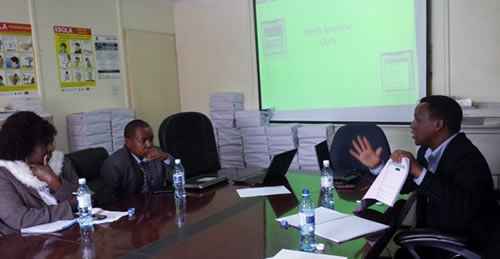
Following the development of the system, the mSOS/IDSR Weekly Mobile Reporting System Stakeholders' Meeting was held on 17 December 2015. Approximately 20 attendees from the Ministry of Health and international partners pre-tested the new system and discussed on the way forward. In January, Training of Trainers (TOT) for the disease surveillance coordinators and disaster response officers at the national level was held (6 January 2016 to 8 January 2016). Approximately 30 officers from the Ministry of Health attended the training.
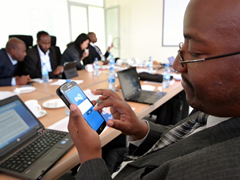
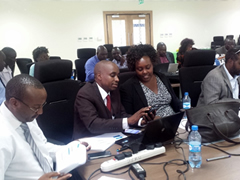
In February 2016, the trainers from the national level started cascading the training down to the county and sub-county officers. As of March 2016, a total of 316 officers including HRIO and DSC from 23 counties (Coast, Central, Eastern, North Eastern and Nairobi Regions) completed the 3-day training course at Midview Hotel (Mombasa, 1-3 February 2016), Panafric Hotel (Nairobi, 8-10 and 15-17 February 2016). Participants were excited to learn the new technology, and eager to use the new system at their workstations. The Regional TOT** in the remaining 24 counties (Western, Rift Valley, and Nyanza Regions) will continue in the coming months.
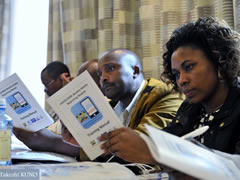
It is encouraging to witness that a small pilot on mSOS has grown into a full-scale Ministry of Health-owned system in Kenya, with potentials to be expanded, maintained, and enhanced locally. It may one day become an essential disease surveillance and disaster response tool that could help save lives.
* The technical working group members include the Ministry of Health (Disease Surveillance and Response Unit (DSRU), Health Information Systems Unit (HIS), eHealth Unit, and ICT Unit) and international partners (JICA, World Health Organization (WHO), United States Agency for International Development (USAID), and Centers for Disease Control and Prevention (CDC)). The system integration and enhancements were made possible through WHO and USAID funds.
**The Regional TOT was made possible through the JICA Ebola Response, WHO, and other supporting funds from international partners.
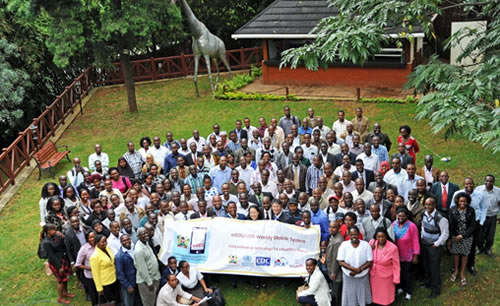
- About JICA
- News & Features
- Countries & Regions
- Our Work
- Thematic Issues
- Types of Assistance
- Partnerships with Other Development Partners
- Climate Change / Environmental and Social Considerations
- Evaluations
- Compliance and Anti-corruption
- Science and Technology Cooperation on Global Issues
- Research
- JICA Development Studies Program / JICA Chair
- Support for the Acceptance of Foreign HRs / Multicultural and Inclusive Community
- Publications
- Investor Relations
